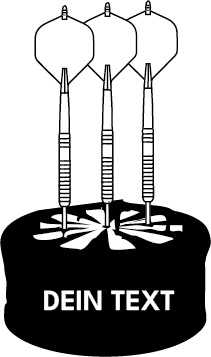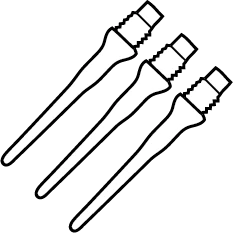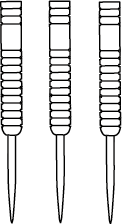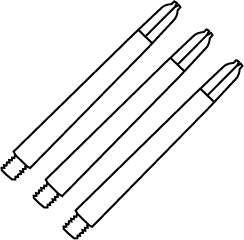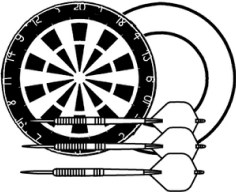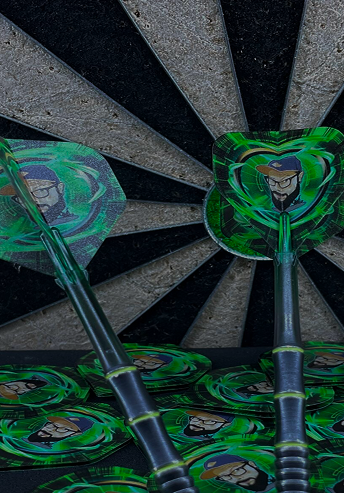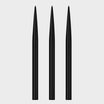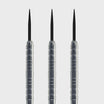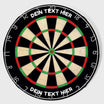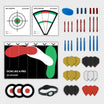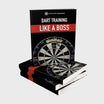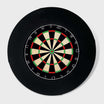
Lukas has been a darts fan since day one and a passionate darts player for over 10 years. After attending the 2016 Darts World Championship at the venerable Alexandra Palace with his future co-founder and then-flatmate Timm, it became clear to him: darts needed to become bigger and more popular in Germany, too. With myDartpfeil and the world's only dart configurator, every darts player—from beginner to professional—can create and customize their own perfect darts.
In today's blog post, we'll take a look at the classic steel darts games . Besides the many great dart games you can enjoy with friends in front of the dartboard, the classic dart games are the ones you'll mostly be playing.
We're talking about X01 games , such as 501 Darts . We'll specifically cover the rules of these classics and explain a few ways these games can be modified to your liking .
Whether 501, 701 or even 1001, there are no limits to your imagination.
Darts in its original form – 501 Darts
Generally, most of you will be familiar with the game under 501. The reason is simple: in all well-known TV tournaments, a leg is played down to 0 points in 501 mode.
Every darts fan knows what to do with this number. That's why it's considered the most classic game that can be played on a steel dartboard . But for beginners, we'd like to explain exactly how this kind of game of darts works.

The classic dart game explanation
The Dart 501 rules briefly explained: In a classic 501 darts game , two players compete against each other . The goal is to roll the 501 points down to zero – as quickly as possible.
That's how simply the game can be broken down. And from this point onward, the variations begin , which many amateur players use to adapt the game and the rules to their own needs .
It's very important to note that the goal of landing on exactly zero points requires a certain amount of skill. A game cannot be won by blindly throwing at the disc in the hope of eventually landing on zero points. If a player has 15 points remaining and hits 17, this is considered a throw-over.
These are dart rules that cannot be changed, but things are different for different variants of the game X01.
301, 501, 701 or 1001?
Except for the basic rules just mentioned, the game format can be modified as desired. The 301, 501, 701, and 1001- point variants have become established in the darts scene in recent years .
The procedure is always the same, regardless of the version. The goal is to end up with exactly zero points .
The starting number is often adjusted to the player's level. For example, beginners typically start with 301 points, while world-class players prefer the 1001-point variant, especially in training .
In competitions , however, the variant with 501 darts and points is usually played. However, as already mentioned, the basic rules remain the same. In smaller tournaments, the 701-dart variant is also often used to decide close matches .
For example, we were at a tournament where I competed in a group stage with five players . The top two finishers would advance to the knockout phase.
After all the matches were completed, I was tied with two other players in second place. But we had also beaten each other by the same score , so the head-to-head record or leg difference couldn't be decisive.
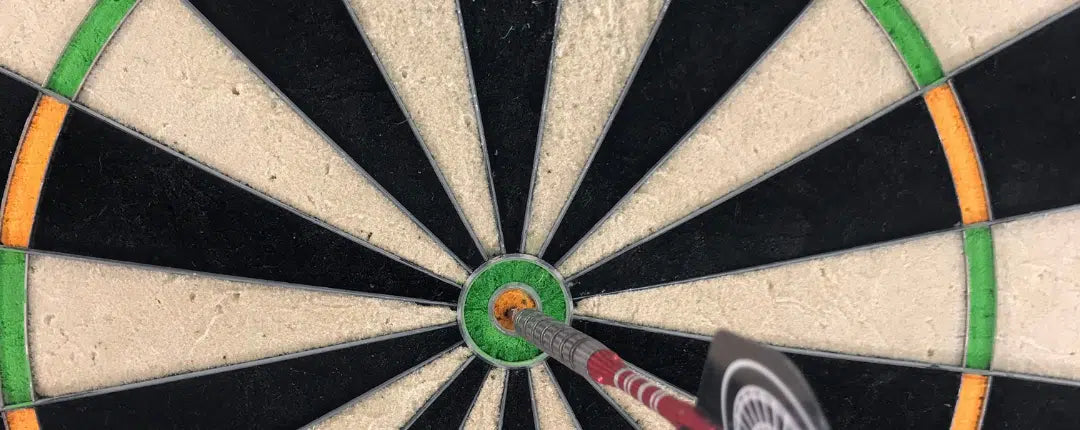
So the decision was made in a three-way match, where the three of us played down a leg of 701. But why 701 and not the usual 501?
Quite simply, the longer the distance , the more likely it is that the best player will ultimately prevail through consistency . This is why this form of play is often chosen.
Darts why 501 and not 500?
Many darts players have asked themselves this question before and some certainly know the answer: Why is the 1 at the end of this dart game?
After all, you could just as easily play 300, 500, 700 or 1000 points to zero.
The answer is simple: With an even starting number that is to be played to zero, a dart player could score continuously over a segment.
For example, with 500 starting points, the player could play the entire leg over the 20. Regardless of whether the game must end with a single out or a double out , the player could stay on a single square or at least a segment.
And this is precisely what the 1 at the end is intended to prevent . The player is forced to demonstrate his skills across the entire dartboard , aiming at and hitting various fields to get exactly zero points.
Other game variations – Double Out, Straight Out, Team Matches
The dart game variants can also be adjusted by checking out, i.e., ending a game. This makes it possible, for example, for inexperienced dart players to initially throw at the large single darts fields and select the Straight Out mode .
In this case, only one throw on the single large field is required to end a game . In competitions, the Double Out mode is often used. Here, the dart players must be a bit more accurate and end a game with a throw on the corresponding double field.
With 20 points remaining, you must aim for the D10. If you hit the single 10, you move on to the D5. The goal remains to get exactly zero points.
Another variation is the Master Out . This allows the game to be ended by hitting one of the small triples . While this variation isn't required in any steel dart competition, it can at least provide a welcome change during practice.

Game modes – Legs, Sets, Best of X?
The game modes can also be customized as desired . At the World Cup, for example, the following is often played to achieve victory:
- A player needs three legs to win a set.
- A leg means that 501 points are thrown to zero .
- In addition, a certain number of sets is needed to finally win the game.
This goes so far that a best-of-13-sets format will be used in the World Championship final . This means that seven sets must be won to become world champion .
In small tournaments for recreational players, the set mode is almost never used . Leg mode is often used, also with the "best-of-X" leg variant.
The dart rules for 501 sets and legs are no different from what you play at home. Therefore, you should also incorporate the set format into your training.
Infobox: So, if you need 6 legs to win, this means you're playing in a best-of-11-leg format. Why? Because a maximum of 11 legs would be played if the final score were 6-5.
Other cool gaming options besides 501 Darts
You can find these and many other game modes in our exclusive e-book . You can also get motivation and a 4-week training plan included.
This ensures that nothing can go wrong. That's why we, and many of our customers, recommend the e-book. Afterward, you can be sure that you'll be ready for any game . Both mentally and in terms of gameplay!
Ready to take your skills to the next level? Discover our exclusive secrets and proven methods to optimize your game:
- The art of tournament planning: Learn in our guide how to become a professional Dart tournaments on its feet.
- Better darts through solo training: Dart training games on your own . Suitable for all skill levels. Learn more now and always throw accurately.
- Excitement, action and strategy in Shanghai Dart : Our guide accompanies you on your way to victory.
Sofern nicht anders angegeben, unterliegt das im Beitrag gezeigte Bildmaterial mit Bezug zu Dartspielern und verwandten Themen dem Copyright der Professional Darts Corporation (© PDC).

